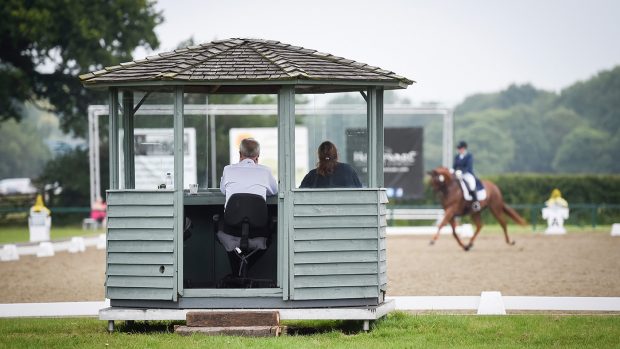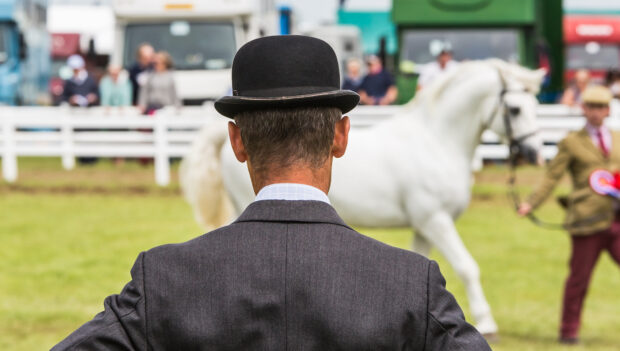A new study has revealed insights into how dressage judges focus their attention when assessing competitors at different levels – with hopes this could help inform judge development and training.
The research was led by Dr Inga Wolframm, professor of sustainable equestrianism at Van Hall Larenstein University of Applied Sciences (VHL) in the Netherlands, in collaboration with Tobii Eye Tracking Technology.
The researchers used eye-tracking technology to record the eye movements of 20 judges – who had varying levels of experience – as they assessed grand prix dressage tests on video.
The research team calculated how long and how often judges “fixated” on different aspects. Fixation in this context means how long the eyes focused on a certain area long enough for the brain to process the detailed information being looked at.
The study found that overall, the judges involved focused more on the front of the horse, compared to the back end, feet, or the rider. But for movements in trot and canter, higher-level judges paid comparatively more attention to the horses’ feet, while lower-level judges focused comparatively more on the rider.
“Dressage judging is cognitively very demanding. Per movement, judges only have a limited amount of time in which to assess a horse-rider combination,” said Dr Wolframm.
“That means judges have to develop their own strategic visual search patterns, focusing on the aspects they consider essential when assessing horse-rider combinations.
“While we were able to detect overarching patterns of visual search behaviour, we also saw considerable variation between individual judges.
“This is something we’ll investigate further in the months to come. At a time when equine welfare and transparency in the sport is increasingly important, we need to know what judges engaged at different levels of the sport focus on.”
The study concluded that although the different visual patterns “may be indicative of the greater expertise of advanced judges, they may also reflect differences in task-specific patterns and their subsequent interpretation by judges”.
“The study underscores the importance of investigating visual gaze patterns in equestrian dressage in particular and highlights the potential of eye-tracking to enhance judging accuracy and transparency, especially with a view to prioritising welfare parameters,” it added.
“The findings suggest that current judging practices could benefit from the development of new guidelines incorporating these insights. By refining these guidelines, the judging process could become more transparent, helping to promote equine welfare by ensuring that horses and relevant behavioural expressions are judged more accurately and fairly.”
Peter Reuter, from Tobii and associate professor at VHL, said: “By identifying the visual cues and patterns associated with effective judging, educational materials can be designed to enhance judges’ observational skills and decision-making accuracy.”
British Dressage (BD) training and education manager Charlotte Osborne told H&H that insights from this study will help BD to better understand how judges make assessments of a combination’s performance.
“The focus and priorities of our more experienced judges, who have long careers as officials in dressage, will in turn help the development of those who are starting out on their judging journey,” she said
“We can use this data to help us define optimum judging at all levels, taking into consideration other important factors such as the mental load and cognition of judges, measured over different periods of time, including length of test and number of competitors per class.
“We are always looking for new and innovative ways to improve the training processes for our judges and welcome this type of evidence-based approach to support the next stages of development for our education systems.”
- To stay up to date with all the breaking news throughout the Burghley, HOYS and more, subscribe to the Horse & Hound website
You might also be interested in:

Subscribe to Horse & Hound magazine today – and enjoy unlimited website access all year round

13 embarrassing mistakes most competition riders have made at some stage

Richard Davison: ‘Dressage needs to implement the code of points’




